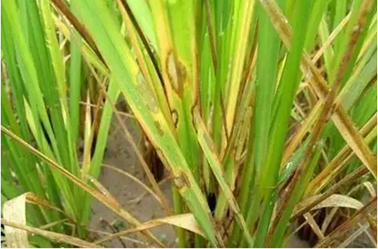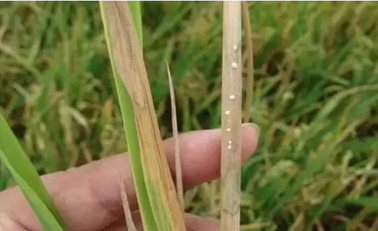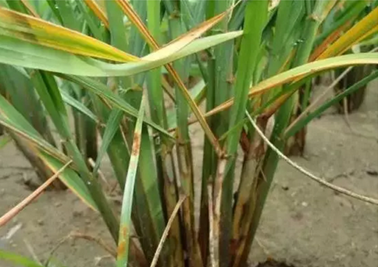In recent years, rice sheath blight has been widespread, although it can not cause endangered production, but the plots with the occurrence of sheath blight are generally reduced. Farmers have done the field of prevention of sheath blight, and the grain of rice is full. If it is not preventive, the rice will prematurely decay, and there will be more empty grains, which will reduce production.

Rice sheath blight is a fungal disease, and the pathogen is Rhizoctonia solani. Also called rotten ankle, flower rod disease. Rhizoctonia solani overwinters on the soil and rice wreckage of the ridge. Sheath blight lesions mainly occur in the sheath and leaves. In severe cases, the bacteria can invade the stem and spread to the ear, which can easily cause premature aging and lodging. The formation of granules reduces the yield. In addition to rice blast, it can be said that rice sheath blight is the biggest disease affecting rice yield. If the control is unfavorable, the production is severe.

Pathogenesis of sheath blight
Rice sheath blight disease begins to occur from the lower leaves of rice plants on the side of the pond stem. The rice with large nitrogen fertilizer and soft tissue is seriously affected. The sheath blight disease begins to occur in the jointing stage of rice panicle, and it develops rapidly after high temperature, high humidity and heavy rain. Because the pathogen causing the rice sheath blight is Rhizoctonia solani, the pathogen survives in the last year's wreckage on the ridge or on the ridge, and after the high temperature and heavy rain, the lower sheath and leaves close to the ridged rice plant are infected first. Gradually develop into the pool and the upper leaves and stems of rice plants.

Symptoms of sheath blight
Rice sheath blight lesions, initially dark green, unclear spots on the edges, later expanded into elliptical spots, the edges are light brown, and multiple small lesions are connected together to develop irregular cloud-like large spots, central lesions It is grayish green or brown. When the humidity is low, the middle is light yellow or grayish white, and the edges are dark brown. Leaf and leaf sheath lesions are basically similar. The disease of the leaves is perishable.

Sheath blight prevention method
(1) Sterilization of Tianmu: Firstly eliminate the pathogen of the ridge, and spray the rice field scorpion with a bactericide before the jointing of the rice. Each 30 kg of water was added with 100 mg of thiophanate-methyl or carbendazim, sprayed on rice field ridges to inhibit pathogens and control the incidence. Every year, an infected area with sheath blight can be applied. Lime powder can be applied to the field to control the propagation of pathogens on the pond.

(2) Field disease prevention: rice jointing stage and booting stage, spraying twice in the field to prevent sheath blight.
40 mL of 12.5% ​​flucyclazole suspending agent (Ou Bo) or 23% ether oxytetrazole suspension per mu, sprayed in the whole field before 9:00 am or after 4 pm, for rice sheath blight, rice blast Rice false smut should have good control effect and obvious increase in yield.
(3) Comprehensive control technology for rice paddy management. Control the amount of nitrogen fertilizer, increase the amount of potassium fertilizer, and apply silicon fertilizer.
More pesticide knowledge , please pay attention to China Pesticide Network
Zhejiang Changxing Senda Bamboo & Wood Products Co.,Ltd , https://www.sendaflooring.com